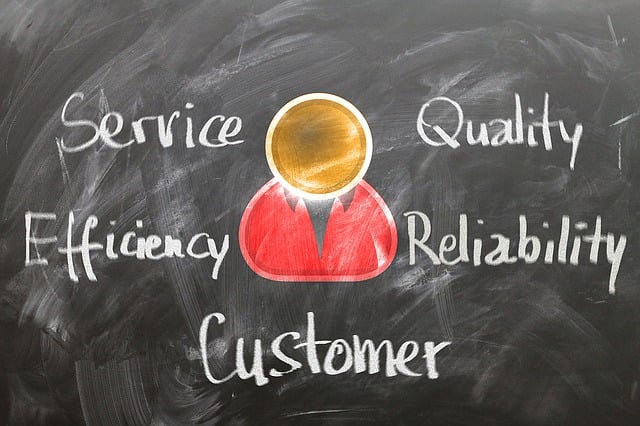Customer Experience Definition : A Comprehensive Guide
Introduction to Customer Experience
Defining Customer Experience
The customer experience definition refers to the sum of interactions and experiences a customer has with a company throughout their entire journey, from the initial awareness stage to post-purchase support and beyond. It encompasses every touchpoint where a customer comes into contact with a brand, product, or service, shaping their overall perception and satisfaction.
Importance of Customer Experience in Business
In today’s highly competitive business landscape, providing an exceptional customer experience is no longer just a nice-to-have – it’s a necessity. A positive customer experience can lead to increased customer satisfaction, loyalty, and advocacy, ultimately driving revenue growth and long-term profitability. Companies that prioritize customer experience are more likely to retain existing customers and attract new ones through positive word-of-mouth and recommendations.

Key Elements of Customer Experience
Interaction Points
Pre-Purchase Experience
The customer experience begins even before a purchase is made. This includes the initial awareness and research phase, where customers gather information, compare options, and form their first impressions of a brand or product. A seamless and informative pre-purchase experience can significantly influence a customer’s decision to engage with a company.
Purchase Experience
The purchase experience encompasses the entire process of acquiring a product or service, from browsing and selecting options to completing the transaction. A hassle-free and efficient purchase experience can leave a lasting positive impression on customers.
Post-Purchase Experience
The customer experience doesn’t end with the purchase – in fact, the post-purchase phase is equally crucial. This includes product delivery, customer support, and any ongoing interactions or services provided by the company. A positive post-purchase experience can foster customer loyalty and encourage repeat business.
Emotional Connection
Customer experience is not just about the functional aspects of interactions; it also involves the emotional connections and feelings evoked within customers. A brand that can create a positive emotional bond with its customers is more likely to cultivate lasting relationships and brand advocacy.
Customer Experience Definition: The Core Components
Customer Perception
At the heart of the customer experience definition lies customer perception – the way customers interpret and feel about their interactions with a brand. This perception is shaped by a multitude of factors, including product quality, customer service, brand values, and even external influences such as social media or word-of-mouth.
Customer Journey
Touchpoints in the Customer Journey
The customer journey encompasses the various touchpoints where customers interact with a brand, product, or service. These touchpoints can be physical (e.g., retail stores, product packaging) or digital (e.g., websites, mobile apps, social media). Each touchpoint contributes to the overall customer experience and can significantly impact customer perception.
Mapping the Customer Journey
To effectively manage and improve the customer experience, businesses need to map out the customer journey, identifying all potential touchpoints and understanding how customers move through them. By mapping the customer journey, companies can pinpoint areas for improvement, eliminate pain points, and optimize the overall experience.
Strategies to Enhance Customer Experience
Personalization and Customization
One of the most effective ways to enhance the customer experience is through personalization and customization. By tailoring interactions, products, and services to individual customer needs and preferences, businesses can create a more relevant and engaging experience. Personalization can be achieved through data analysis, customer segmentation, and leveraging technologies like artificial intelligence and machine learning.
Effective Communication
Feedback Mechanisms
Effective communication is essential for delivering an exceptional customer experience. This includes not only communicating clearly with customers but also providing channels for customers to share their feedback and concerns. Implementing feedback mechanisms, such as surveys, customer portals, and social media monitoring, allows businesses to gather valuable insights and address customer needs promptly.
Multichannel Support
In today’s digital age, customers expect to be able to interact with brands through multiple channels, including phone, email, chat, social media, and more. Offering multichannel support ensures that customers can reach out through their preferred communication method, enhancing convenience and accessibility.
Continuous Improvement
The customer experience is not a one-time endeavor; it requires continuous improvement and adaptation. As customer needs and expectations evolve, businesses must be agile and responsive, regularly evaluating their processes and implementing enhancements based on customer feedback and market trends. Embracing a culture of continuous improvement ensures that the customer experience remains relevant and exceptional.
Measuring Customer Experience
Key Performance Indicators (KPIs)
Customer Satisfaction (CSAT)
One of the most commonly used metrics to measure customer experience is customer satisfaction (CSAT). This metric gauges how satisfied customers are with a specific interaction, product, or service. CSAT scores can provide valuable insights into areas that need improvement and help businesses track the effectiveness of their customer experience initiatives.
Net Promoter Score (NPS)
The Net Promoter Score (NPS) is another widely used metric that measures customer loyalty and the likelihood of customers recommending a brand to others. A high NPS score indicates a positive customer experience and strong brand advocacy, while a low score may signal underlying issues that need to be addressed.
Data Collection Methods
Surveys and Feedback Forms
Surveys and feedback forms are essential tools for gathering customer feedback and measuring customer experience. These can be administered at various touchpoints throughout the customer journey, allowing businesses to capture real-time insights and sentiments. Well-designed surveys and feedback forms can provide rich qualitative and quantitative data to inform customer experience strategies.
Analytics and Reporting
In addition to direct feedback, businesses can leverage analytics and reporting tools to gain a comprehensive understanding of the customer experience. This includes analyzing website and app usage data, social media interactions, and customer support metrics. By combining direct feedback with analytical insights, businesses can identify patterns, uncover hidden pain points…Making data-driven decisions to optimize the customer experience.
Conclusion
The customer experience definition encompasses the entirety of a customer’s interactions with a brand, from initial awareness to post-purchase support and beyond. By understanding the key elements that shape the customer experience, implementing effective strategies, and measuring performance through relevant KPIs and data collection methods… Businesses can create a superior customer experience that fosters loyalty, advocacy, and long-term success.
More about marketing:
Understanding Clients Habits via Surveys, click here
Ins and outs of B2C marketing, click here
Increasing customer loyalty, click here
Trailblazing Digital Marketing Approaches, click here
Elevate Your Brand with These 7 Marketing Techniques, click here
Building Effective Marketing Strategies for Healthcare Businesses, click here


